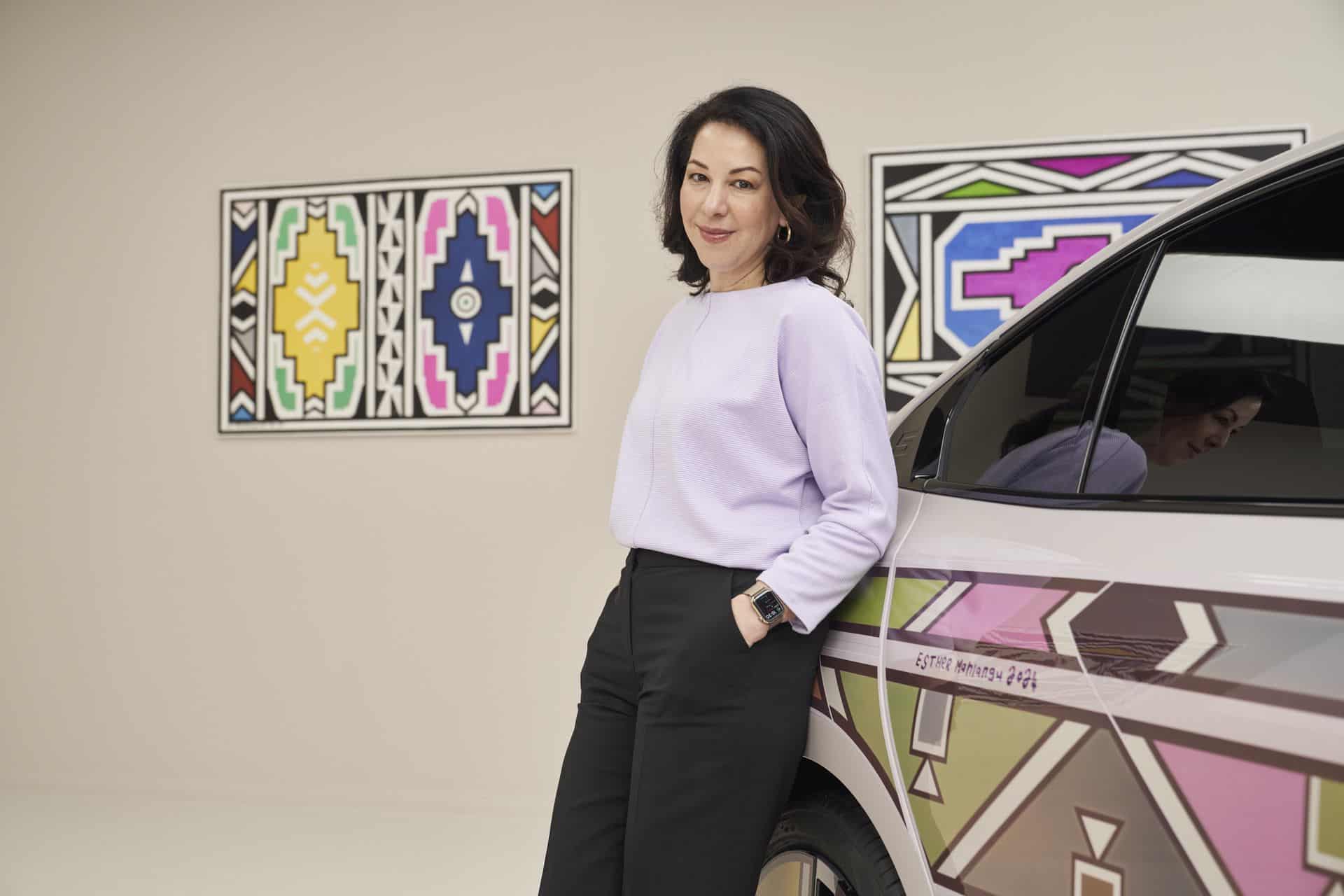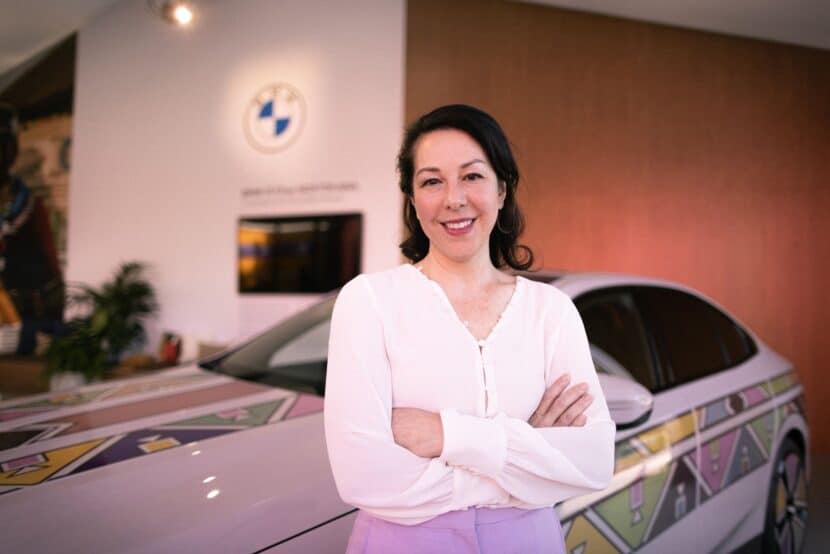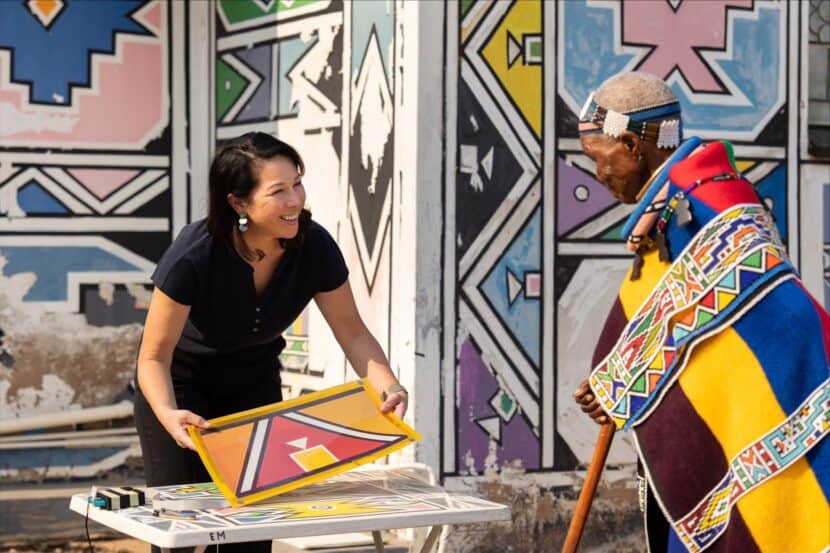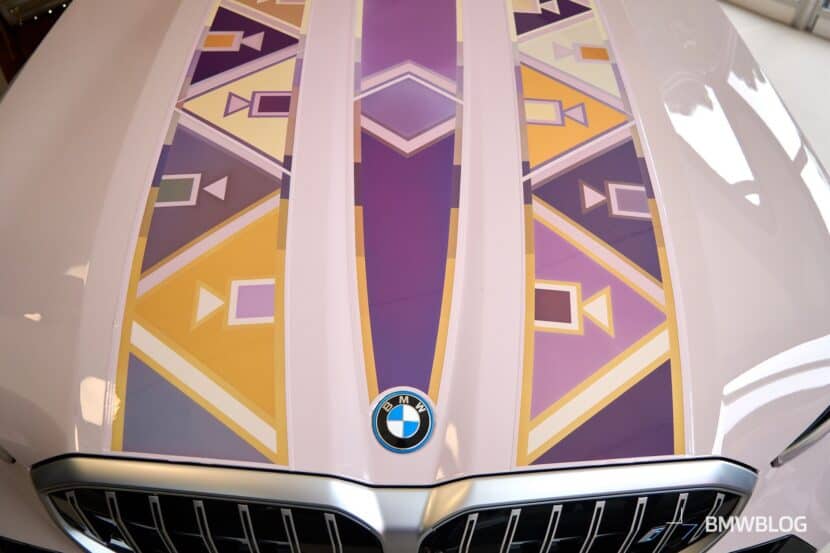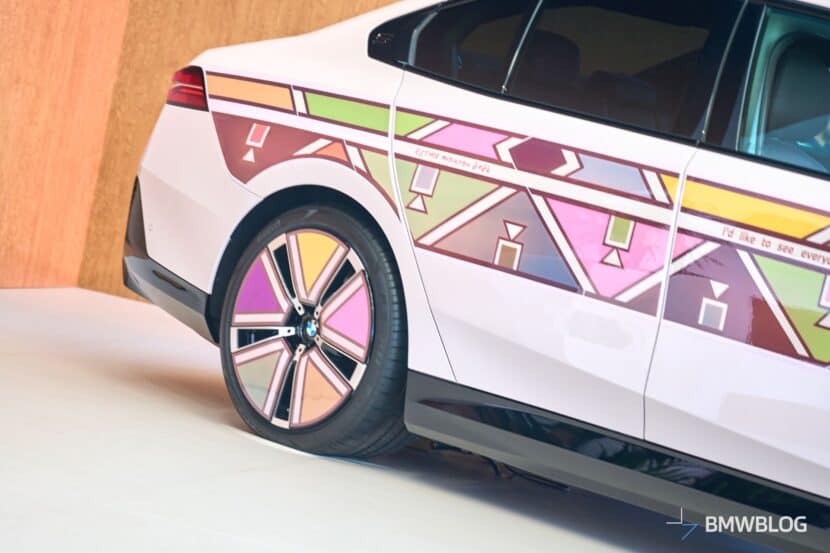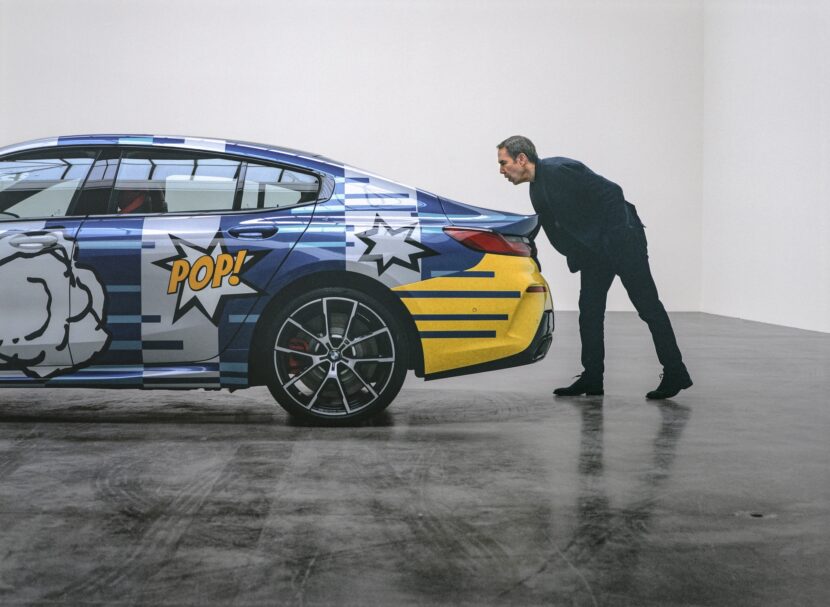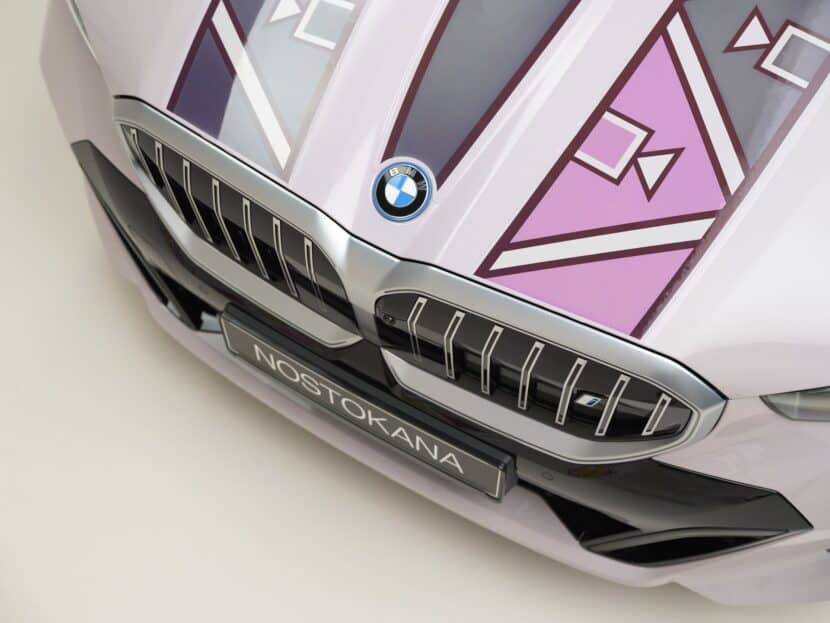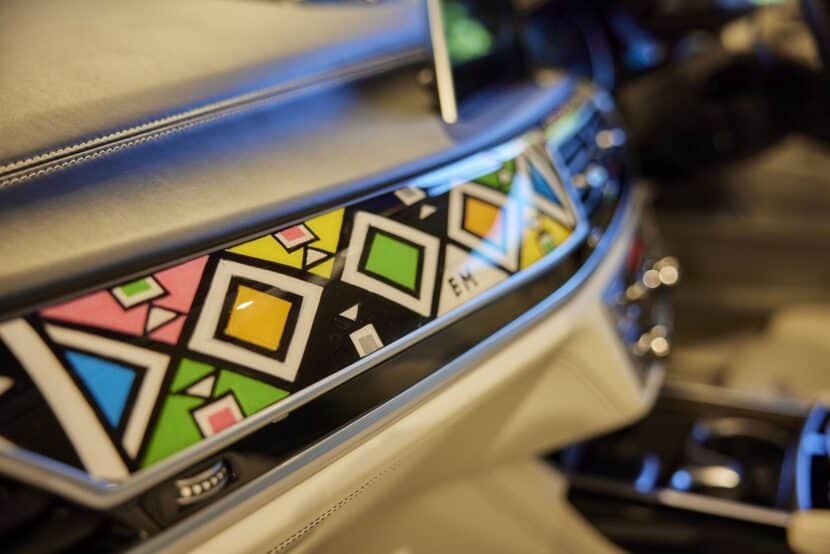Last, BMW has unveiled a groundbreaking concept car featuring an e-ink exterior that can change colors on demand. Of course, that might sound familiar to some of you because BMW unveiled a similar tech two years ago with the iX Flow. Since, we also had a chance to see the color-changing Vision Dee concept based on the same technology. But now BMW is taking things a step further with the launch of the BMW i5 Flow NOSTOKANA at Frieze LA 2024. The innovative electric 5 Series pays homage to the work of South African artist Esther Mahlangu, whose vibrant geometric patterns adorn the car’s body.
The Engineer Behind the Innovation: Stella Clarke
Stella Clarke is a BMW R&D engineer who played a key role in developing the color-changing technology, and over the years, we had the chance to chat with her on several occasions. While in Los Angeles, BMW facilitated a Q&A with the Australian-born engineer who was gracious to walk us through her latest project. The discussion digs deep into the intricate confluence of design, technology, and culture, revealing BMW’s commitment to pushing the boundaries of automotive innovation and artistry.
Stella Clarke opened the session with a captivating narrative, drawing inspiration from a photo of artist Esther Mahlangu with a BMW 7 Series. This image, showcasing Mahlangu’s joy and the cultural significance embedded in her interaction with the vehicle, sparked Clarke’s exploration into this i5 Flow project. “We’re very proud of this car that we revealed yesterday,” Clarke told us. “It is also technically further development than we have done so far. So this was technically very, very challenging.”
Inspiration and Technical Challenges
Mahlangu’s artwork is displayed on the exterior of the BMW i5 thanks to no fewer than 1,349 sections of individually controllable film. The BMW iX Flow was black and white and had 60 segments that could be individually controlled. The Vision Dee had 240. “The e-ink technology allows the car’s exterior to shift through a wide range of colors, with the potential for future iterations to display intricate patterns and designs,” Clarke emphasized, potentially hinting at future developments.
Envisioning the Future with Holger Hampf
This e-ink innovation represents a significant leap forward in automotive design. While the technology is still under development, there’s a clear intention to bring it to market someday. Holger Hampf, President of BMW Designworks, also hinted at the future possibilities. “Imagine personalizing your car’s exterior to match your mood, or even displaying artwork as you drive,” Hampf told us. “We’ve progressed really far,” Clarke added. “So even though I can’t name a date, I can tell you the progression is significant and if you extrapolate that into the future…”
Hampf also agrees that this is a breakthrough technology for automotive applications with a lot of future potential. “We’re really pushing the boundaries there. E-Ink is just one example for exterior paint innovation and new paint processes, obviously, very much oriented towards sustainability,” he added. “So it’s wonderful to see design and engineering to come together in such product design.”
Safety and Subtlety in Color-Changing Technology
Addressing concerns about the safety of color-changing technology on roads, Clarke provided a comprehensive explanation, emphasizing its subtlety and compliance with safety standards. “Compared to lights flashing, color flashing is much more subtle. It really doesn’t emit light, it only reflects light, and if it’s dark, you don’t see it,” Clarke explained. She highlighted the inherent safety of the technology, noting its passive nature and the strict regulations governing the use of lights on vehicles.
“It’s very subtle and there are rules against lighting up the exterior. But they’re much more lenient in terms of color change in the exterior, because it’s less in your face,” she added. Clarke reassured that safety is a paramount concern, and each application of the technology is thoroughly evaluated in conjunction with authorities to ensure it meets safety standards. She concluded, “Relative to any other dynamic visual technology out there, it’s probably the most subtle,” underscoring the technology’s safe integration into the automotive landscape.
BMW’s Cultural Engagement with Thomas Girst
Thomas Girst is in many ways Mr. BMW Culture. Girst started in 2003 at BMW is now the Global Head of Cultural Engagement. As a curator, he has organized many exhibitions around the world and has been directly involved with several BMW Art Cars, including the upcoming one with artist Julie Mehretu. We first met Girst at Villa d’Este in late 2021 where he hosted us for an interview with Jeff Koons who unveiled his 8 Series collaboration with BMW.
So we asked Girst what are his thoughts around a BMW Art Car or an artist collaboration using the e-ink technology. He highlights the potential of e-ink technology and digital interfaces within BMW vehicles to revolutionize the concept of art cars. He mentioned the BMW art car roster as an ideal platform for artists to further personalize cars, citing the example of Chinese artist Cao Fei, who created BMW art car number 18 and integrated her “Quantum Garden” installation into the BMW 7 Series through a digital interface.
E-Ink Technology and Future Art Car Collaborations
Girst suggested that artists interested in digital mediums have a unique opportunity to engage with the interior interfaces of luxury automobiles, such as BMW or Rolls Royce, to create bespoke experiences for drivers. He believes that leveraging these digital screens and interfaces inside cars represents a future direction for automotive artwork, providing a new way for artists to connect with and enrich the driving experience of their clients.
The roundtable concluded with a discussion on the technical aspects of e-ink technology, particularly its energy-efficient, bistable nature, which requires no power to maintain a chosen color state. Clarke also underscored the potential for integrating solar power to further enhance the technology’s sustainability.
Overall, the BMW i5 Flow NOSTOKANA offers a glimpse into the future of car design in the context of art. It combines artistic expression with cutting-edge technology, paving the way for a more personalized and potentially sustainable driving experience.


